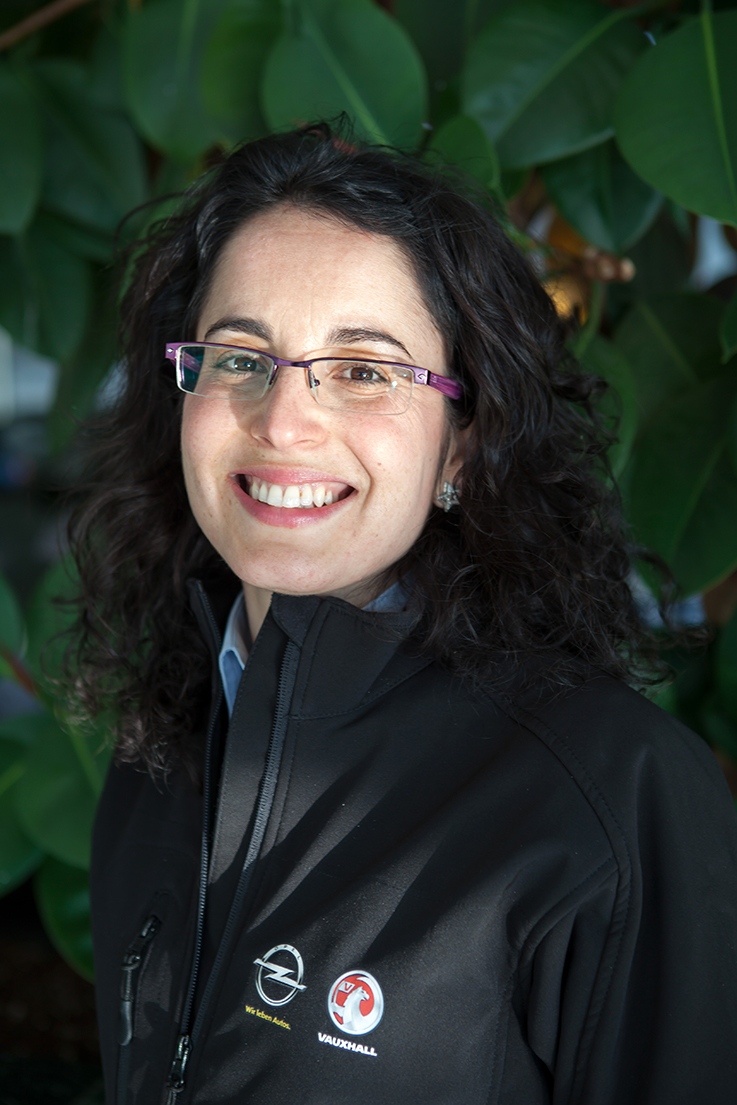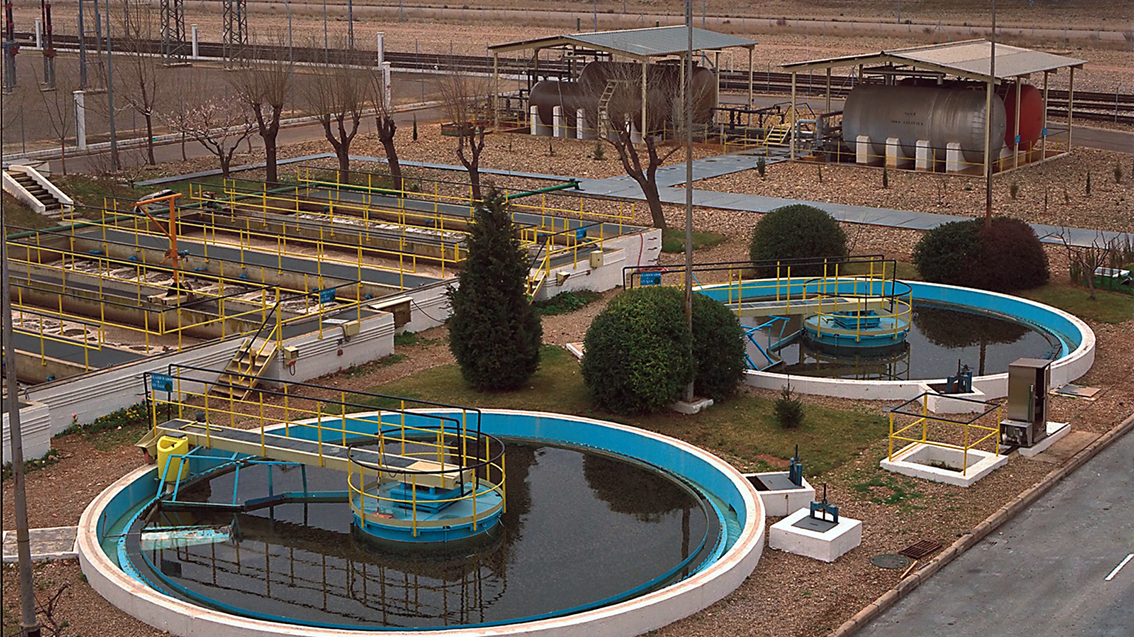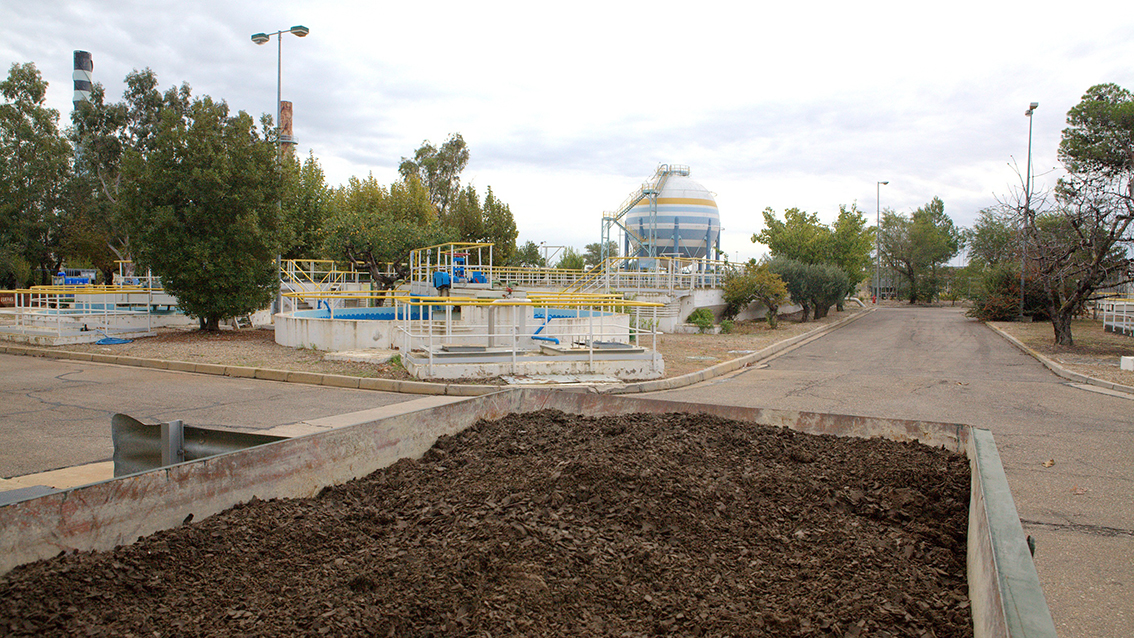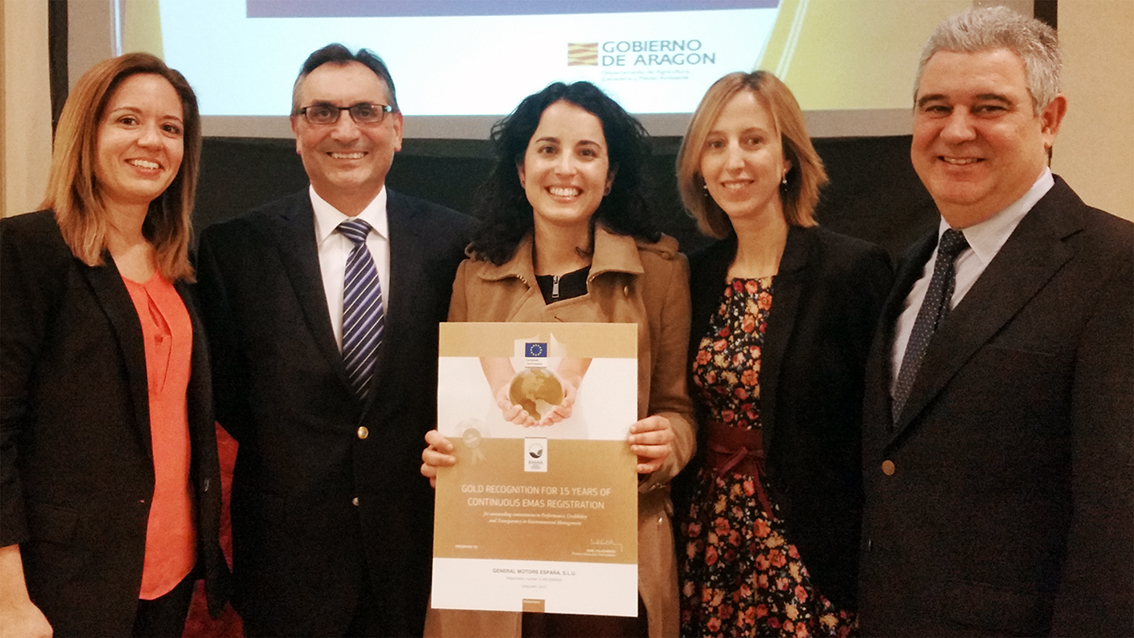- Das Saragossa-Konzept spart Energie und schützt die Umwelt: In den vergangenen drei Jahren hat der Standort Saragossa eine Energiereduzierung von mehr als 70.000 Megawattstunden (MWh) erreicht – dies entspricht einem Konsum von 4500 Privathaushalten, in den jeweils vier Personen leben. Die Elektrizität, die in Saragossa zum Einsatz kommt, stammt aus Erneuerbaren Energien oder aus hocheffizienten Anlagen.
Congratulations on your win! Tell us what makes the EMAS ‘Golden Award’ so special?
The special thing about this award is that it serves to validate our years of work. The plant has received EMAS certification every year since 1999. Meeting the conditions year after year is hard work. The European Commission has very strict standards that exceed even the requirements of ISO 14001. They not only check to make sure we are doing everything right on paper – ensuring that we comply with all legal specifications, guidelines, etc. and report on their environmental performance through the publication of an independently verified environmental statement. The auditors also conducts on-site interviews to make sure that we actually put our principles into practice. Antonio Cobo, the director, not only is interviewed, they also speak with employees, engineers, and team members. This way auditors can ensure that the environmental protection specifications are not just dictated from above, but are practiced in all areas.
During the audit procedure, both the plant and the suppliers and contractors go under the microscope. Is it difficult to find the right partners?
Yes and no. The plant is very large and we have many suppliers and contractors. There are always new ones being added to the plant, and that can complicate things. On the other hand, our suppliers and contractors on site have indicated that they are interested in protecting the environment, so we offer training programs, and we have had some very good experiences.

That sounds like a lot of work. How do you manage it all?
Back in 1999 we introduced an Environmental Committee with environmental representatives from the different departments – these include engineers, supervisors, and maintenance specialists who have participated in special workshops designed to train them in the areas of environmental protection and sustainability. Our success would not have been possible without these 20 or so people. They work tirelessly and keep us up-to-date on the challenges in their areas and the progress they have made. In addition to environmental awareness, not only training is relevant, communication is vital, through the various available channels – such as videos, internal magazine, newsletters. Here we have a close collaboration with the communication department.
Do you believe that the employees at the plant have a particularly strong commitment to the environment?
Definitely. That is also the feedback we received from the auditors after their visit. They said that their interviews revealed that the subject is a very important one for employees, that employees see themselves as a part of the environment, and that they want to help protect it in their daily work. For this reason, the EMAS Golden Award represents a real team effort, and we should all be very proud.
»
We would like to design a meeting room complete with furniture made entirely from recycled materials from out plant.
Could you give us an example of one aspect that the auditors found particularly impressive?
After years of hard work, we became completely ‘landfill free’ in 2014. That means that none of the waste generated in our plant ends up in landfills – everything is recycled. We have also made important strides in reducing our energy consumption. For 20 years, our Energy Committee, like the Environmental Committee, has implemented various initiatives. Another major milestone was our certification for the ISO 50001 standard, Systems Energy Management, in 2012. That makes us the only plant in the world to have been presented with all three important certifications – EMAS, ISO 14001 and ISO 50001.
What is the secret to your (environmental) success?
It is less a product of technology – which, in plants of this size and type, is all relatively similar – and more a result of the care and commitment of our employees. That is definitely the key. We want to keep spreading this feeling, so on 5 June, we will be organizing a special celebration for World Environment Day.
What makes your job exciting?
I have been the Environmental Coordinator since 2009, and I was impressed at what had been achieved since 1999, so I made it my goal to build upon this success. I find it interesting that consumers are becoming more and more conscious of environmental issues. When a person is deciding what car to purchase, he or she takes into account whether the product was produced using environmentally-friendly means – and that will become even more important in the years to come. I am very pleased to be able to work step by step on the future of the brand, to participate in its success, and to help spread the message that we are responsible for the future of our planet.
What are your next plans?
We would like to design a meeting room complete with furniture made entirely from recycled materials from our plant. It would act as a visible symbol of our principles. And it would probably look pretty good to boot.
From 2012 to 2014 more than 3.5 million euros have been invested in environmental and energy saving measures in Zaragoza.

SEWAGE PLANT
In recent years GM has achieved to reduce water consumption by 15 percent. The wastewater treatment plant handles 2000 cubic meters of sewage daily.

SHREWD IDEA
Zaragoza plant composts its wastewater treatment sludge into fertilizer.

CHANGED MANUFACTURE PROCESS
Changed manufacturing process: Zaragoza plant succeeds in reducing solvent consumption from its paint shop; it now reuses 80 percent of it.

GOLD RECOGNITION
From left to right – Mar Gasca (Business Communications Integrator), Antonio Cobo (GM Spain Managing Director), Idoia Espinal (Environmental Coordinator), Marta Sanz (Environmental Engineer) and Alejo Catalan (Plant Technical Manager) receiving the award from the European Commission.

